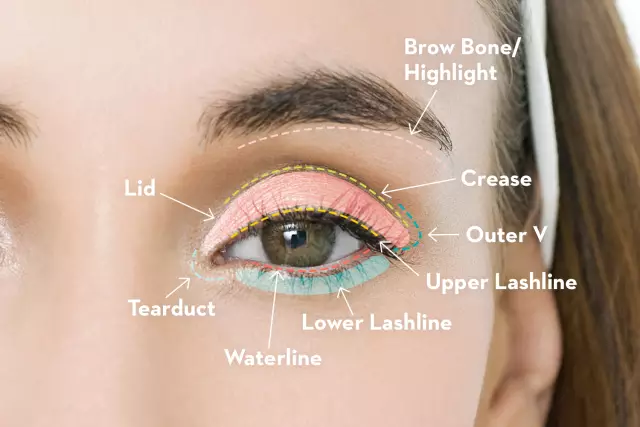- Author Rachel Wainwright [email protected].
- Public 2023-12-15 07:39.
- Last modified 2025-11-02 20:14.
Albucid-DF
Albucid-DF: instructions for use and reviews
- 1. Release form and composition
- 2. Pharmacological properties
- 3. Indications for use
- 4. Contraindications
- 5. Method of application and dosage
- 6. Side effects
- 7. Overdose
- 8. Special instructions
- 9. Application during pregnancy and lactation
- 10. Use in childhood
- 11. Drug interactions
- 12. Analogs
- 13. Terms and conditions of storage
- 14. Terms of dispensing from pharmacies
- 15. Reviews
- 16. Price in pharmacies
Latin name: Albucidum-DF
ATX code: S01AB04
Active ingredient: sodium sulfacetamide (sulfacetamid sodium)
Manufacturer: DOSFARM LLP (Kazakhstan)
Description and photo updated: 2018-23-11

Albucid-DF is an antimicrobial ophthalmic drug.
Release form and composition
Dosage form - eye drops 20% and 30%: transparent, colorless or slightly yellowish liquid (5, 10 or 15 ml each in plastic dropper bottles, sealed with caps with first opening control, in a cardboard box 1 bottle).
Composition of 1 ml of the preparation:
- active substance: sodium sulfacetamide - 0.2 or 0.3 g;
- auxiliary components: water for injection, 1M hydrochloric acid solution, sodium thiosulfate.
Pharmacological properties
Pharmacodynamics
Albucid-DF is a broad-spectrum antibacterial drug from the sulfonamide group. It has a bacteriostatic effect. The mechanism of its action is explained by competitive antagonism with para-aminobenzoic acid (PABA) and competitive inhibition of dihydropteroate synthetase, as a result of which the synthesis of tetrahydrofolic acid, which is involved in the synthesis of purine and pyrimidine bases, is disrupted. As a result, the synthesis of nucleic acids (DNA and RNA) of bacterial cells is disrupted, their reproduction is inhibited.
Albucid-DF is active against gram-negative and gram-positive cocci, Yersinia pestis, Bacillus anthracis, Vibrio cholerae, Toxoplasma gondii, Clostridium perfringens, Escherichia coli, Actinomyces israelii, Corynebacterium diphtheriae, Shigella sppp
Pharmacokinetics
When applied topically, the maximum concentration of the drug is achieved within the first 30 minutes after instillation. Its indicator is approximately: 3 mg / ml - in the cornea; 0.5 mg / ml - in the moisture of the anterior chamber; 0.1 mg / ml - in the iris. Less than 0.5 mg / ml of the drug remains in the tissues of the eyeball for 3-4 hours. Penetration of sulfacetamide increases in case of damage to the corneal epithelium.
Indications for use
- infectious conjunctivitis;
- purulent corneal ulcers;
- blepharitis;
- blenorrhea of newborns (prevention);
- purulent complications after trauma and eye surgery (prevention);
- gonorrheal eye diseases in newborns and adults (treatment and prevention).
Contraindications
According to the instructions, Albucid-DF is contraindicated in case of hypersensitivity to any of the components that make up it.
Instructions for the use of Albucid-DF: method and dosage
Treatment and prevention of eye infections:
- adults are prescribed a 30% solution: 1-2 drops 2 or 3 times a day; after the disappearance of the acute purulent-inflammatory process - 1-2 drops 3 times a day;
- children from 1 year old are prescribed 20% solution: 1-2 drops 4 or 5 times a day; after the disappearance of the acute process - 1-2 drops 3 times a day.
For the prevention of blennorrhea, newborns immediately after birth drip 2 drops of a 20% solution into each eye, the instillation is repeated after 2 hours - 2 drops in each eye.
Side effects
Albucid-DF eye drops can cause the following side effects: lacrimation, itching, stinging, redness, short-term burning sensation, swelling of the eyelids, and local allergic reactions.
Overdose
Overdose data are not provided.
special instructions
When instilling the drug, care should be taken: do not allow the tip of the dropper to come into contact with any objects or surfaces. After each use, the bottle must be tightly closed with a cap.
Hypersensitivity to Albucid-DF eye drops can be observed in patients who have an increased sensitivity to carbonic anhydrase inhibitors (for example, diacarb), sulfonylurea derivatives (glibenclamide), thiazide diuretics (hydrochlorothiazide), furosemide.
In case of irritation, lower concentration solutions are prescribed.
Influence on the ability to drive vehicles and complex mechanisms
Given the likelihood of developing side effects from the organ of vision, it is recommended to be careful when performing potentially hazardous types of work, including driving a car and complex mechanisms.
Application during pregnancy and lactation
During pregnancy and lactation, Albucid-DF should only be prescribed if the expected benefit outweighs the potential risks.
Pediatric use
There are no age restrictions for the use of the drug. May be appointed from birth.
Drug interactions
Albucid-DF is incompatible with silver salts. It is forbidden to use it together with anesthesin, dicaine and novocaine, since they reduce the bacteriostatic effect.
Salicylates, paraaminosalicylic acid and diphenin increase the toxicity of sodium sulfacetamide.
Albucid-DF increases the specific activity of indirect anticoagulants.
Analogs
Analogues of Albucid-DF are Sulfacil, Sulfacil sodium, Sulfacil sodium eye drops, etc.
Terms and conditions of storage
Store out of the reach of children, protected from light, at a temperature of 15-25 ° C.
Shelf life - 2 years, after the first opening of the bottle - 10 days.
Terms of dispensing from pharmacies
Available without a prescription.
Reviews of Albucid-DF
According to reviews, Albucid-DF is an effective antimicrobial agent. Although the solution is intended to treat the eyes, many mothers use it to treat the common cold in children. Additional advantages of the drug include low cost and no age restrictions. The disadvantages are burning immediately after instillation (however, it quickly passes) and a short shelf life after the first opening of the bottle.
Price for Albucid-DF in pharmacies
The approximate price for Albucid-DF is 60-80 rubles per bottle.

Anna Kozlova Medical journalist About the author
Education: Rostov State Medical University, specialty "General Medicine".
Information about the drug is generalized, provided for informational purposes only and does not replace the official instructions. Self-medication is hazardous to health!






